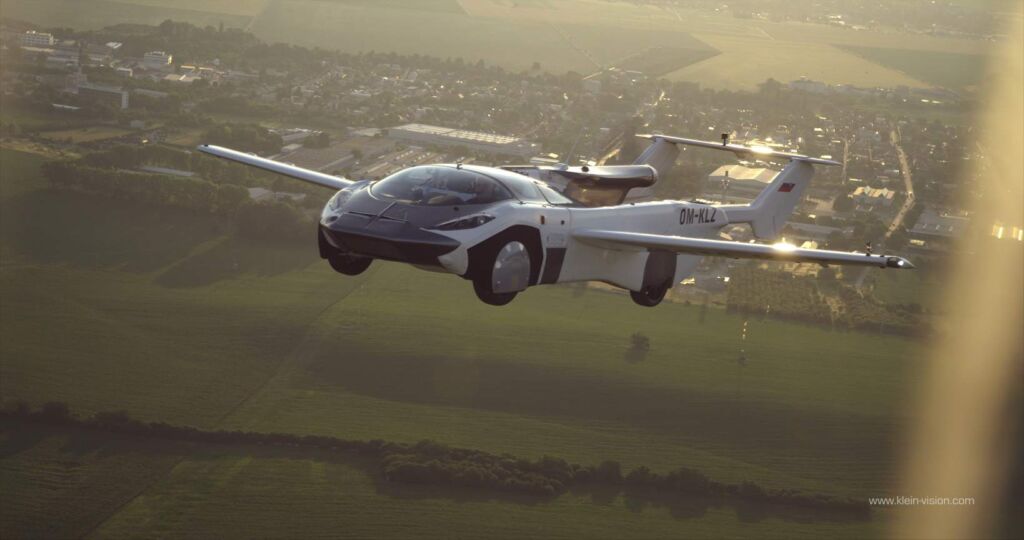The budding flying car business has left the sci-fi realm and is now heralded as one of the mobility options for the future, capable of reducing the strain on existing transport infrastructures.
AirCar, a dual-mode car-aircraft, made headlines by completing a 35-minute test flight between international airports in Nitra and Bratislava, Slovakia on 28 June. After landing, at a click of a button the aircraft folded its wings along its sides, transforming into a sports car in 2 minutes and 15 seconds.
The flying car boasts a BMW engine, a ballistic parachute and runs on regular petrol-pump fuel like an ordinary car.
AirCar Prototype 1 has flown at an altitude of 2500 m and reached a maximum cruising speed of 190km/h thanks to its 160HP engine with fixed-propeller. It can carry two people weighing up to 200 kg.
Klein Vision’s next step is to build the pre-production model which it says will have a 300HP engine and receive the EASA CS-23 aircraft certification with an M1 road permit.
AirCar Prototype 2, the pre-production model, will be equipped with a 300HP engine and receive the EASA CS-23 aircraft certification with an M1 road permit. With its variable pitch propeller, the Prototype 2 is expected to have a cruise speed of 300km/h (162kt) and range of 1000km (621mi).
“This flight starts a new era of dual transportation vehicles. It opens a new category of transportation and returns the freedom originally attributed to cars back to the individual.” said Professor Klein after exiting the AirCar cockpit in Bratislava. “AirCar is no longer just a proof of concept; flying at 8,200ft at a speed of 100kt, it has turned science fiction into a reality.” Added Anton Zajac, the co-founder of Klein Vision.










